On this side of the planet we are not aware of the essential role it has food in Japanese society. Smells, textures or seasonal products mark the gastronomic rhythm in Japan, but also the vital.
Eating in Japan is a ritual that manifests itself in a simple and daily way, that evokes memories and strengthens ties between human beings. One way to understand life around a table that we will be able to discover –without getting up from the sofa at home– thanks to the Japanese Film Festival Online, which in its second edition offers us (from today until February 27) a cinematic journey through japanese flavors –past and present– in four of his films.
“Japanese culture is enormously sophisticated. It is full of codes and gestures of deep meaning. Being gastronomy such an important part of their culture, couldn't help but have fancy etiquette and be full of those deep meanings that he mentioned; which are expressed both through preparation and in the tasting of the enormous variety of dishes that make it up ”, explains Alejandro Rodríguez, coordinator of Art and Culture of the Madrid Japan Foundation, in charge of organizing this free online festival.
Mio's Cookbook (Haruki Kadokawa, 2020), The God of Ramen (Takashi Innami, 2013), The Chef of South Polar (Shuichi Okita, 2009) and Bread of Happiness (Yukiko Mishima, 2012) are the movies from the Japanese Film Festival Online that invite us to eat Japan (in the original version with subtitles in Spanish), but they are not the only ones that will help us get closer to the culture of the country of the rising sun, since all its programming is a authentic journey through Japanese geography, from north to south: Aomori, Hokkaido, Tokyo and Shizuoka, Kumamoto...
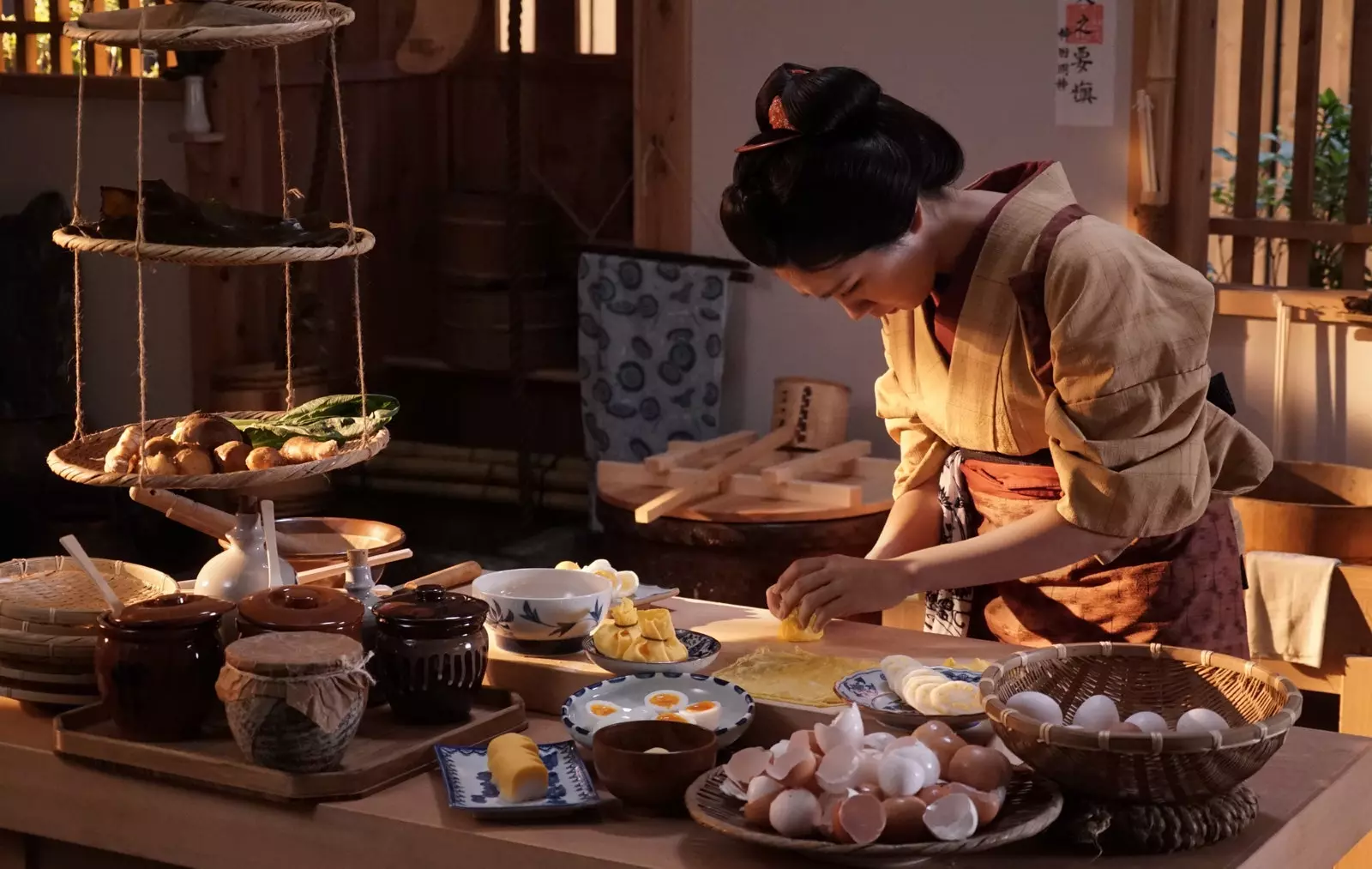
Mio's Cookbook (Haruki Kadokawa, 2020).
'MIO'S COOKBOOK'
Plot: The Edo period (which spanned 200 years from the 17th to the 19th centuries) was a time of relative peace and cultural maturity in Japan. In this context, young Mio struggles to make a name for herself as a chef in effervescent Edo (present-day Tokyo); her while she dreams of reuniting with Noe, her childhood best friend, who has become a courtesan (high-class geisha) in the most important red light district in Japan.
Setting: The film's setting work is praiseworthy, with a exquisite reproduction of the kitchen utensils of the time. The meticulous recreation of the dishes activates the spectator's palate and immerses us in a whole philosophy of flavor, analyzing the difference in taste between Osaka and Edo.
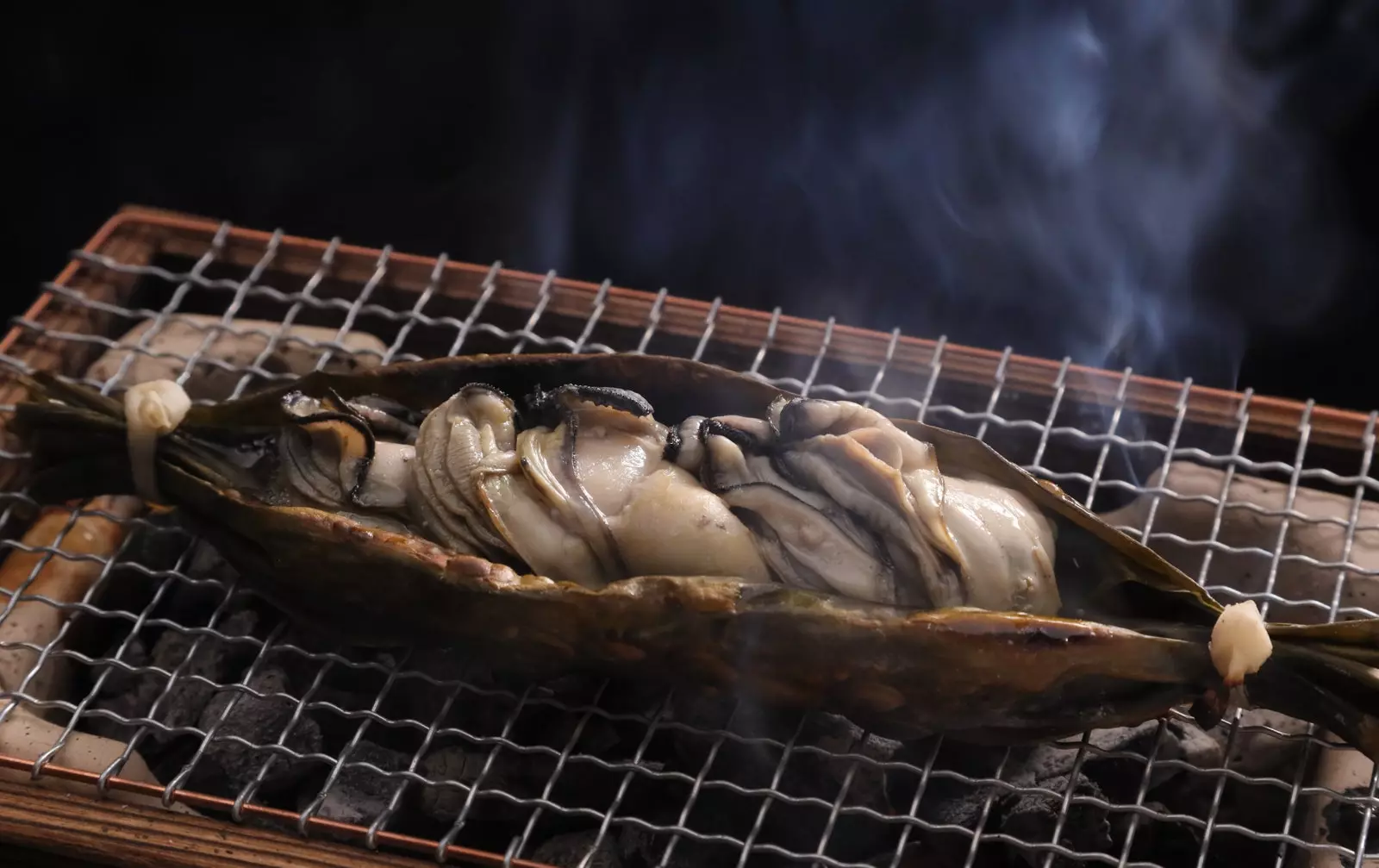
Oyster plate.
Gastronomy: “In Mio's Cookbook we see a wide variety of dishes, with preparations in some cases much more sophisticated than a bowl of ramen (in others the same simplicity is also appreciated). When we talk about Japanese food, we often forget that there are regional kitchens with their own dishes and flavours", explains Alejandro Rodriguez.
In this film we will be able to discover how the preparation of some oysters, for example, differs completely depending on how it is done. to Kansai taste (region where Osaka is located), or to that of Kanto (region where Tokyo is located; which received the name of Edo at the time in which the film is set), continues the coordinator, who also talks to us about how on the tape that emotional part that food has for the Japanese: “A seasonal dish can connect directly with a feeling of sweet nostalgia, by associating it with a good memory evoked at a very specific time of the year”.
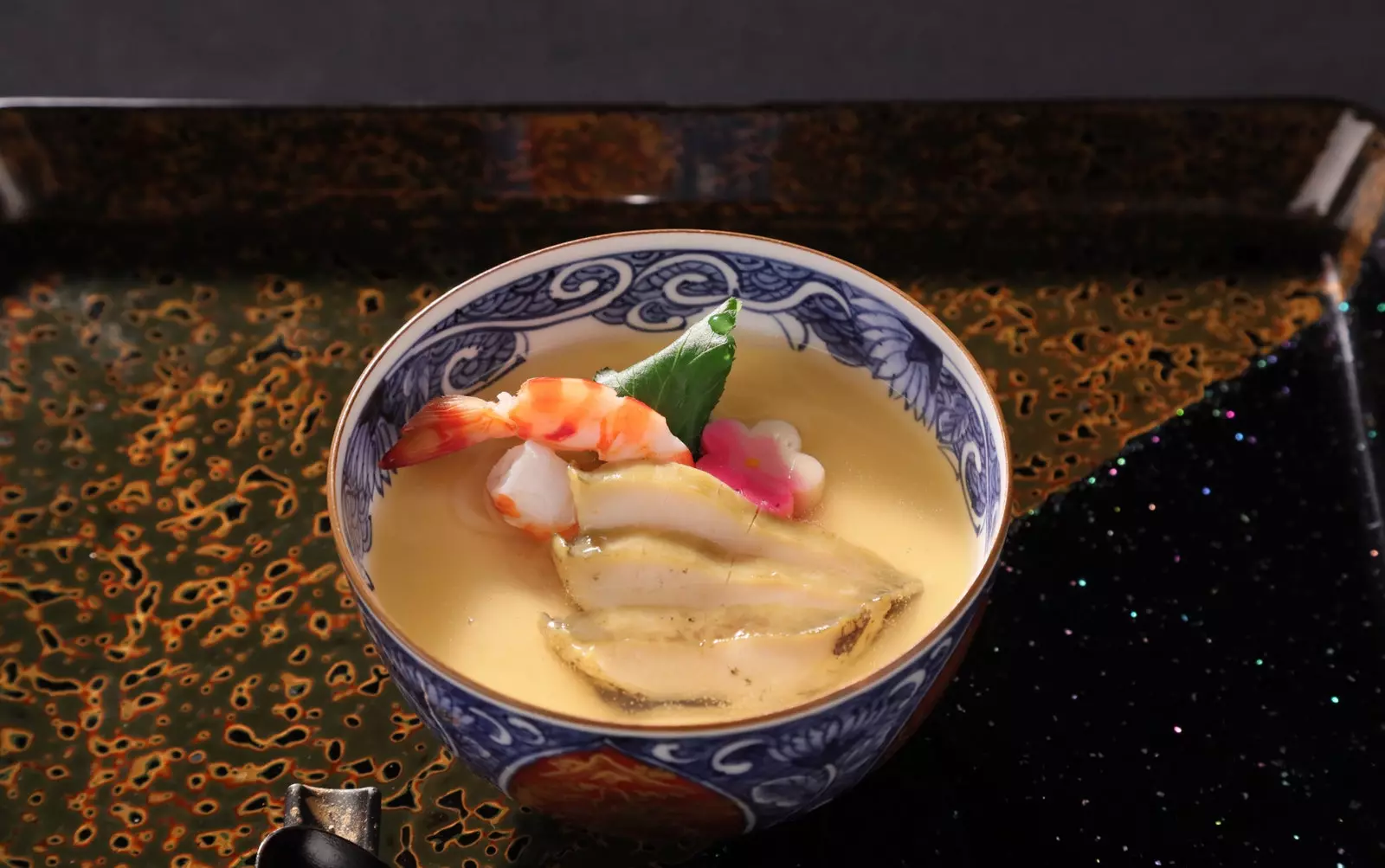
Chawanmushi.
Plates: As Alejandro comments, the Chawanmushi is a dish with a prominent role in the film. Egg curd soup with dashi, which is steamed: “In the film we perceive the fundamental importance of the making a broth dashi with umami. This broth, made from katsuobushi (dried bonito flakes) and konbu seaweed, apparently so simple, is the base of countless recipes”. Y find the exact spot dashi Mark the difference when it comes to achieving excellence in Japanese cuisine.
One of the differences in taste reflected in the film between the Kanto and Kansai regions is that which corresponds to the Tokoroten, agar-agar vegetable jelly noodles They can be eaten both sweet and savory.
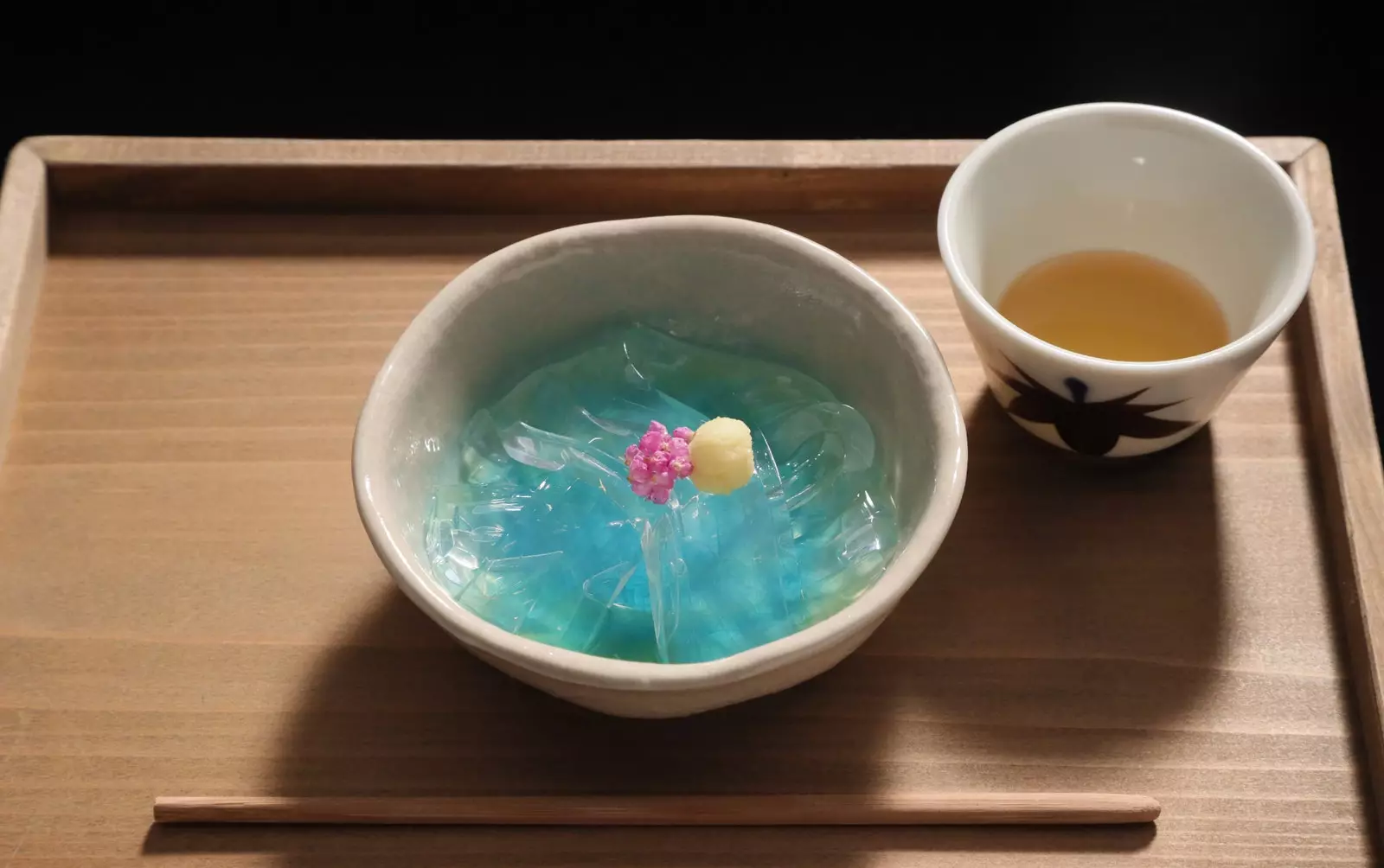
Tokoroten.
‘THE GOD OF RAMEN’
Plot: Years ago there existed in Ikebukuro, near the center of Tokyo, a small ramen shop called Taishoken. Every day there were long queues of people waiting to enjoy what they considered to be Best ramen in Tokyo. In just four hours, its owner served 200 people.
East moving documentary portrays the life of Kazuo Yamagishi, founder of Taishoken, and delves into the soul of a man who he poured the love he felt for his wife into achieving the best ramen. Kazuo generously shared with his apprentices all the secrets of his technique, leaving that legacy to humanity.
Plates: “In The God of Ramen it is easy to highlight the dish that is the common thread of this documentary. Ramen is a fast, cheap meal that satisfies and warms up all kinds of customers alike. But not because it is cheap it stops being a dish that requires care and dedication in its elaboration and that admits a great variety of styles”, recalls the expert in Japanese culture.
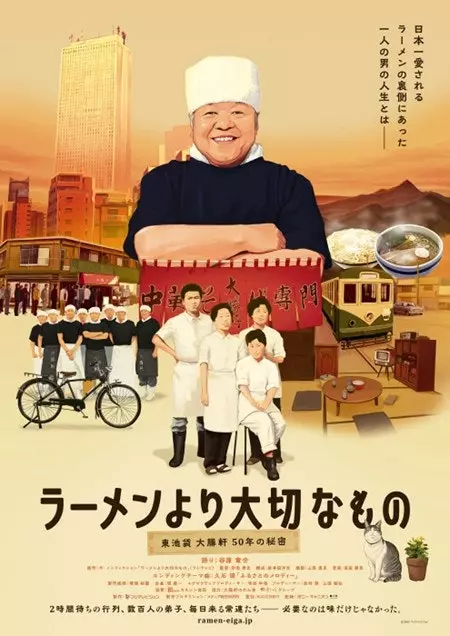
The God of Ramen (Takashi Innami, 2013).
‘THE CHEF OF SOUTH POLAR’
Plot: Cult comedy in Japan, rarely shown in Spain, which narrates the adventures of a group of men assigned to a expedition in the Antarctica. Nishimura, in charge of the kitchen, strives daily to fill the stomach and the heart of his companions. For it, he combines imagination, technique and generosity, making Japanese, French or Chinese dishes. Its recipes soften the hardness of the insulation, at 54 ° C below zero on the outside, helping to preserve the last vestiges of sanity. But what will happen when they run out of ramen?
the movie is Based on Jun Nishimura's memoir who was actually a chef at the Dome Fuji Station in Antarctica. And the shooting took place in the harsh winter of Abashiri, north of the Hokkaido region. The colorful and succulent dishes contrast with the icy white desert landscape.
Gastronomy: In The Chef of South Polar we see how Japanese gastronomy not only includes dishes of Japanese creation, such as sashimi, but also the adaptation to Japanese taste of dishes from international cuisines.
“Of course, they are all prepared by the protagonist with the same idea, whether it is a French dish or a Japanese one: that of make food a meeting point between people and a moment in which to make the people who accompany him happy”, points out the coordinator of Art and Culture of the Madrid Japan Foundation.
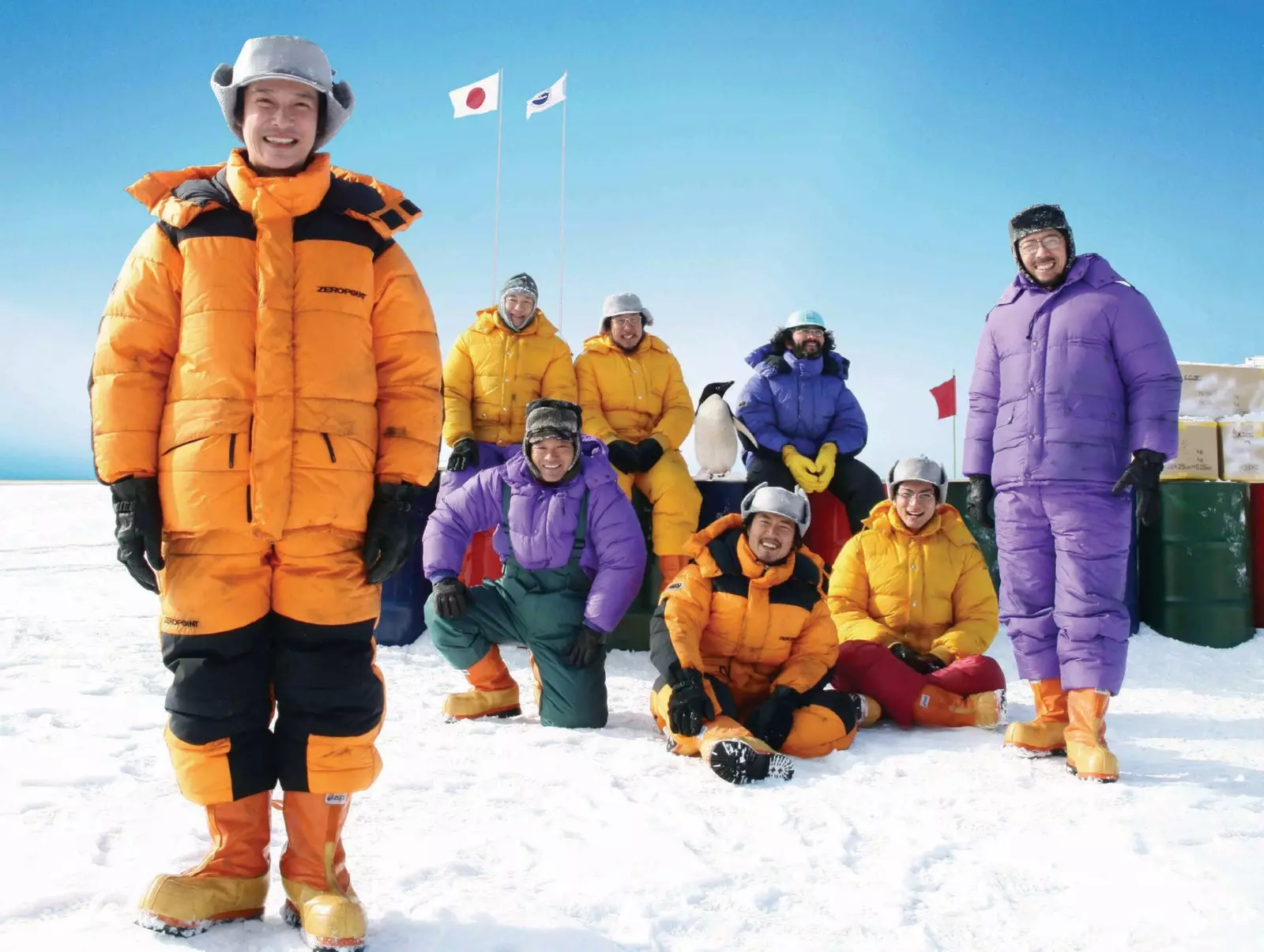
The Chef of South Polar (Shuichi Okita, 2009).
BREAD OF HAPPINESS
Plot: The director Yukiko Mishima offers us a beautiful seasonal portrait in the rural landscape of Toyamachi (Hokkaido, the northernmost region of Japan). There, far from the madding crowd, a young couple decides to open a cafeteria where every day bread and pastries are baked by hand. In it, visitors can leave your emotional baggage : the couple welcomes them warmly and silently extends their hand.
Gastronomy: Bright seasonal fruits and vegetables, crusty bread, sponge cakes... These humble elaborations, made with meticulousness and from the heart, they are part of that calm spirit that transmits the nature reflected in the film. A whole healing ritual for troubled souls.
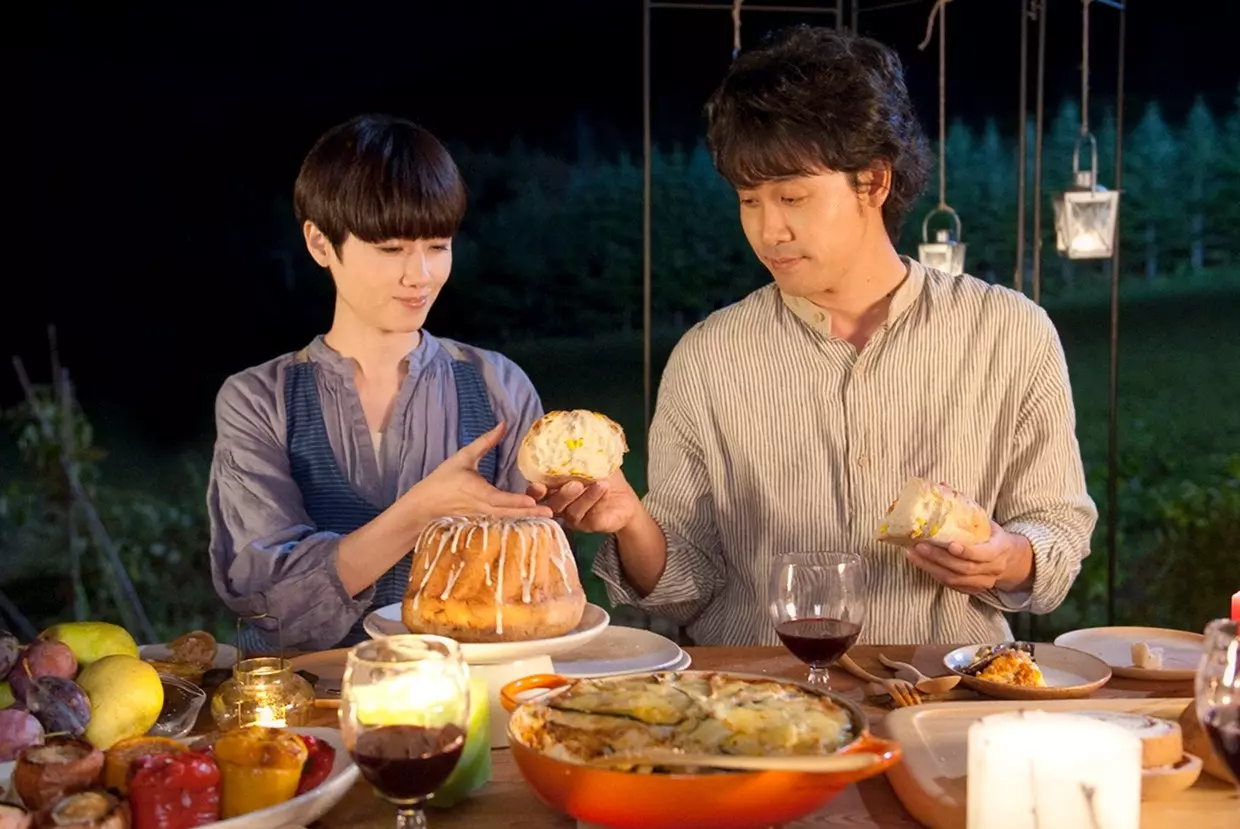
Bread of Happiness (Yukiko Mishima, 2012).
Plates: “Bread in Japan is an imported food but adapted to local customs and tastes. Notice how the different types and elaborations of bread that are prepared are associated with the seasons and to the seasonal products that the owners of the cafeteria produce in the natural paradise in which they live”, concludes Alejandro Rodríguez.
